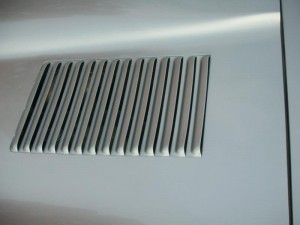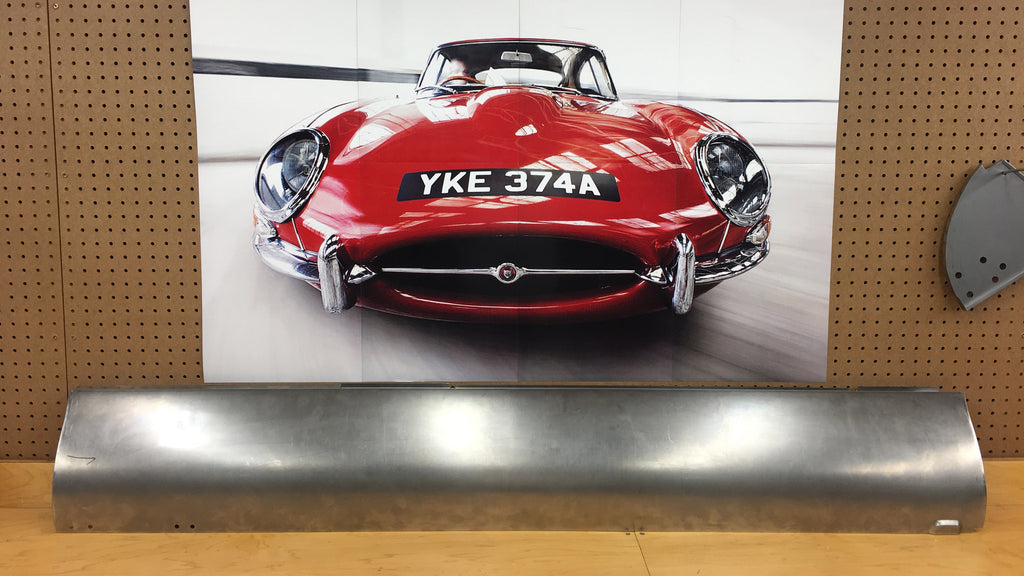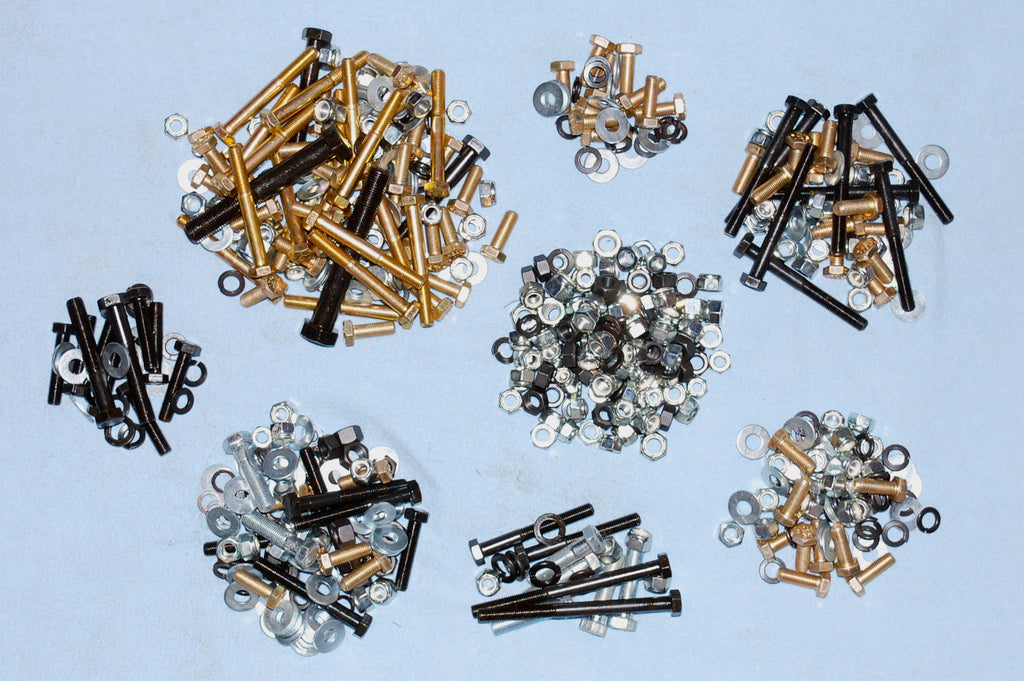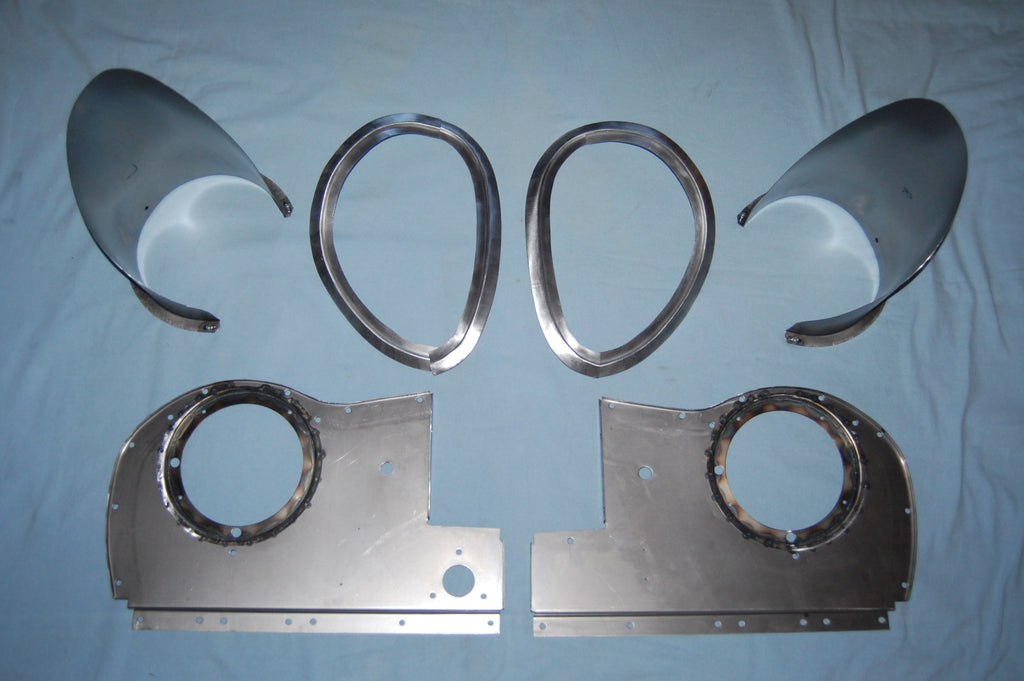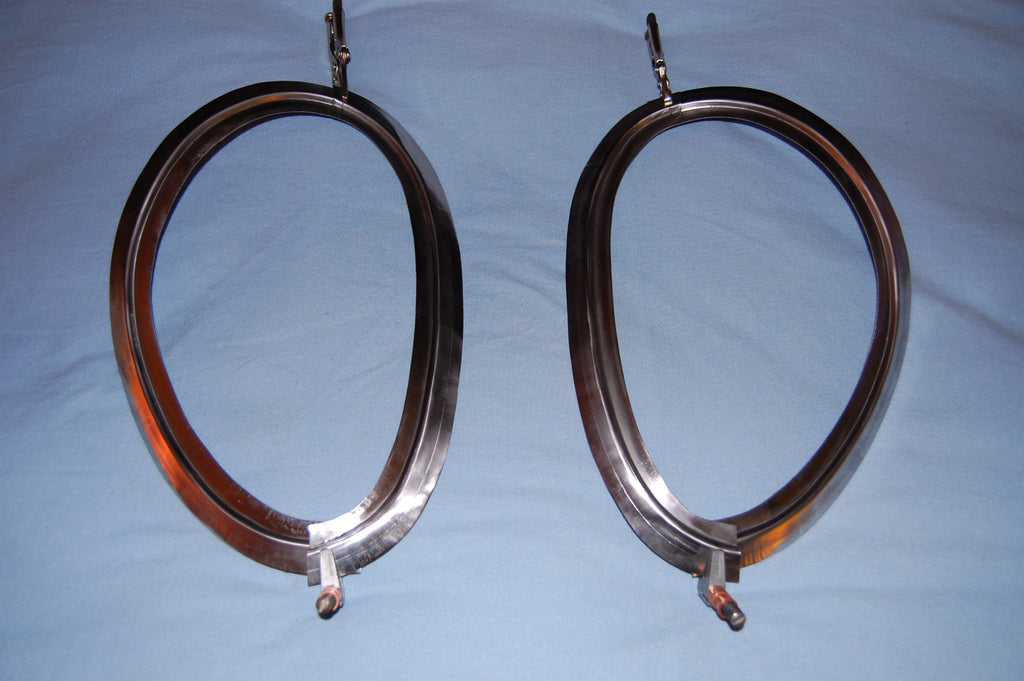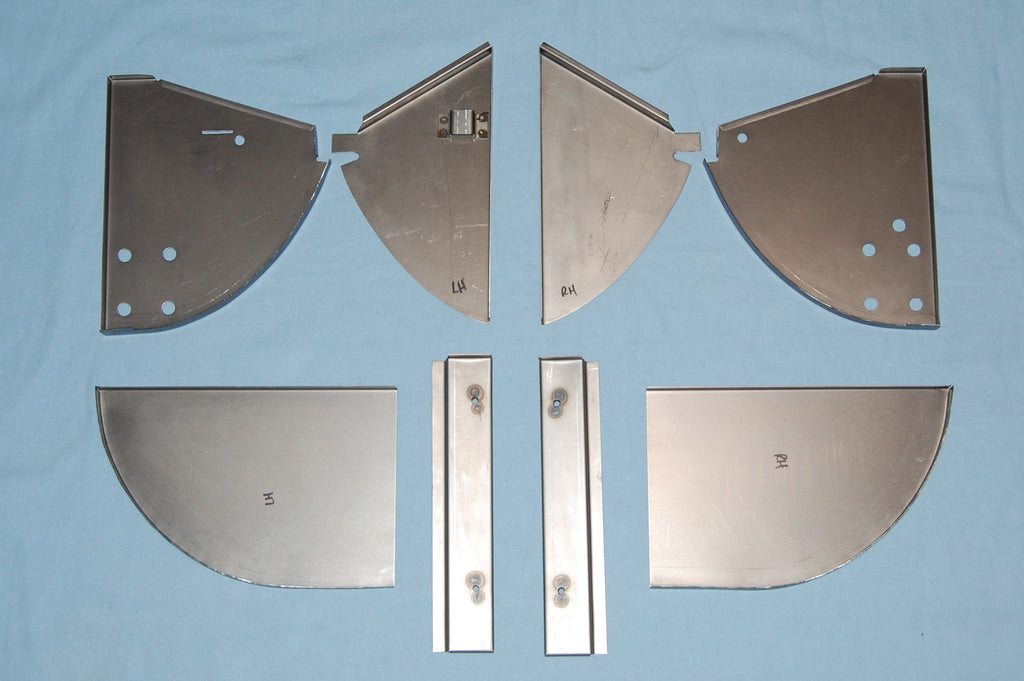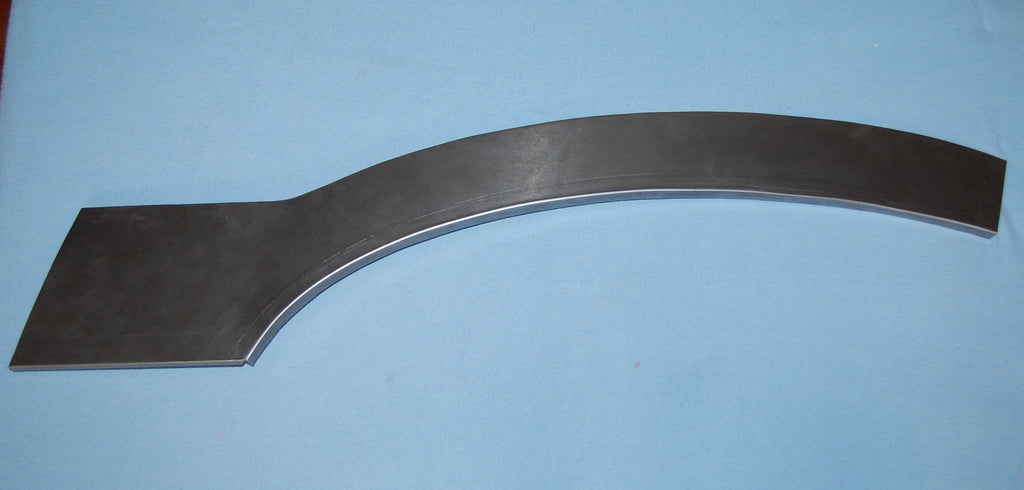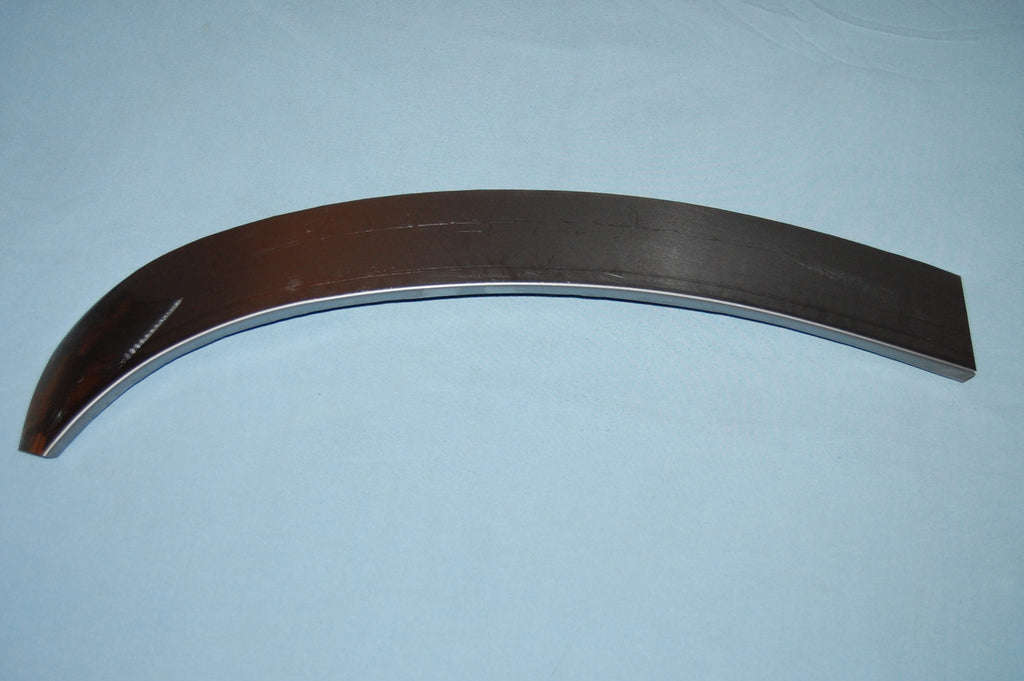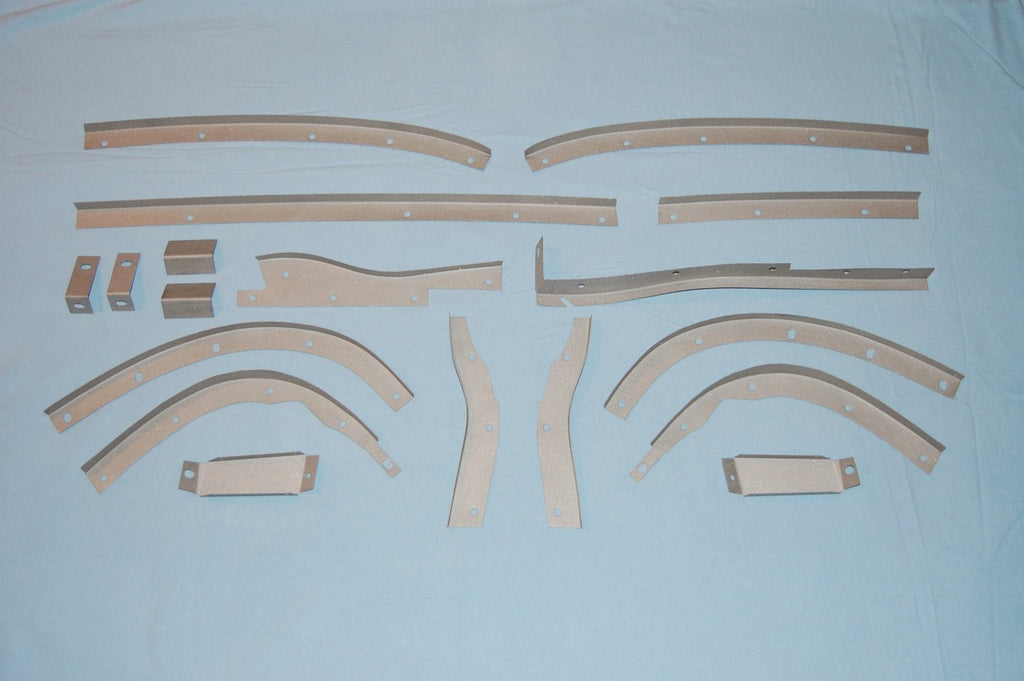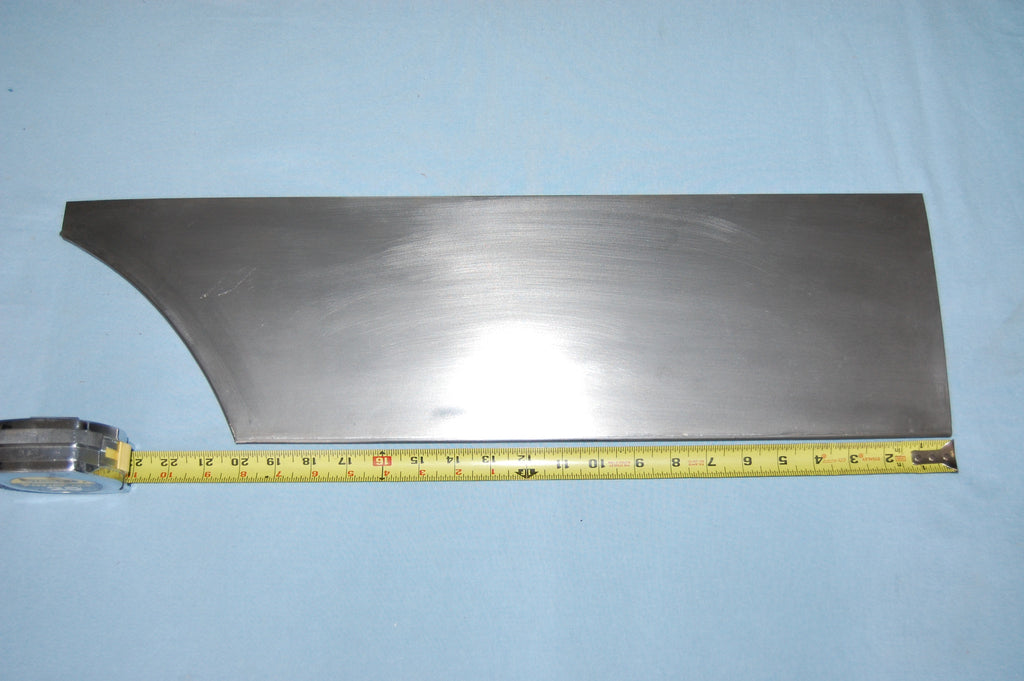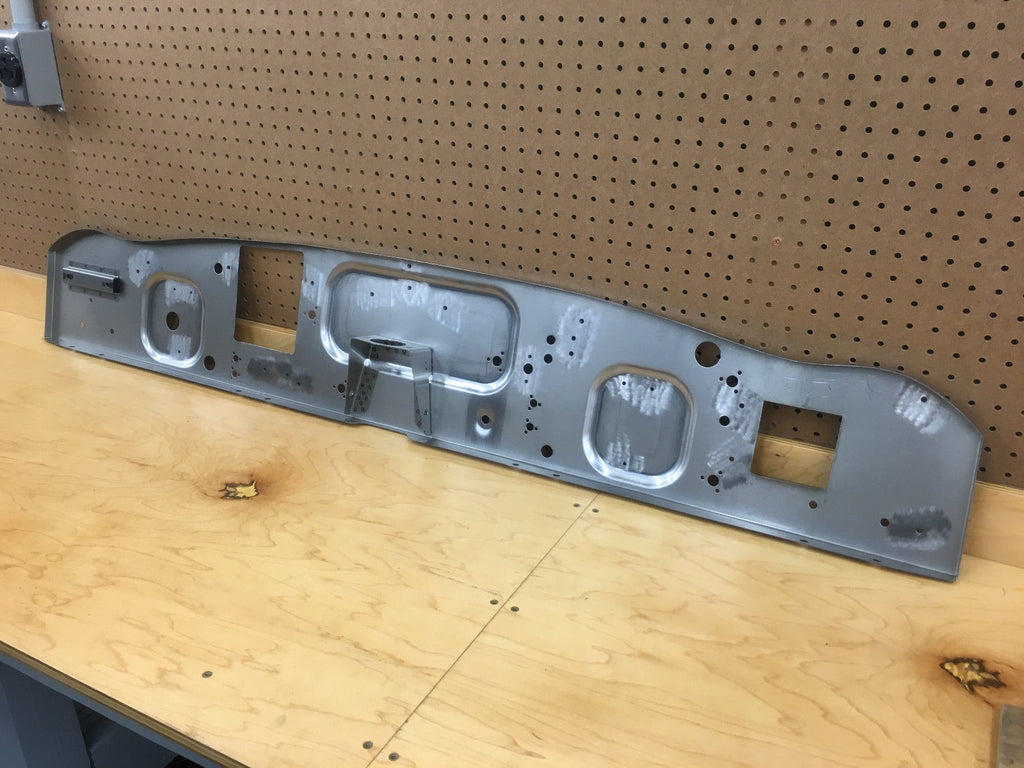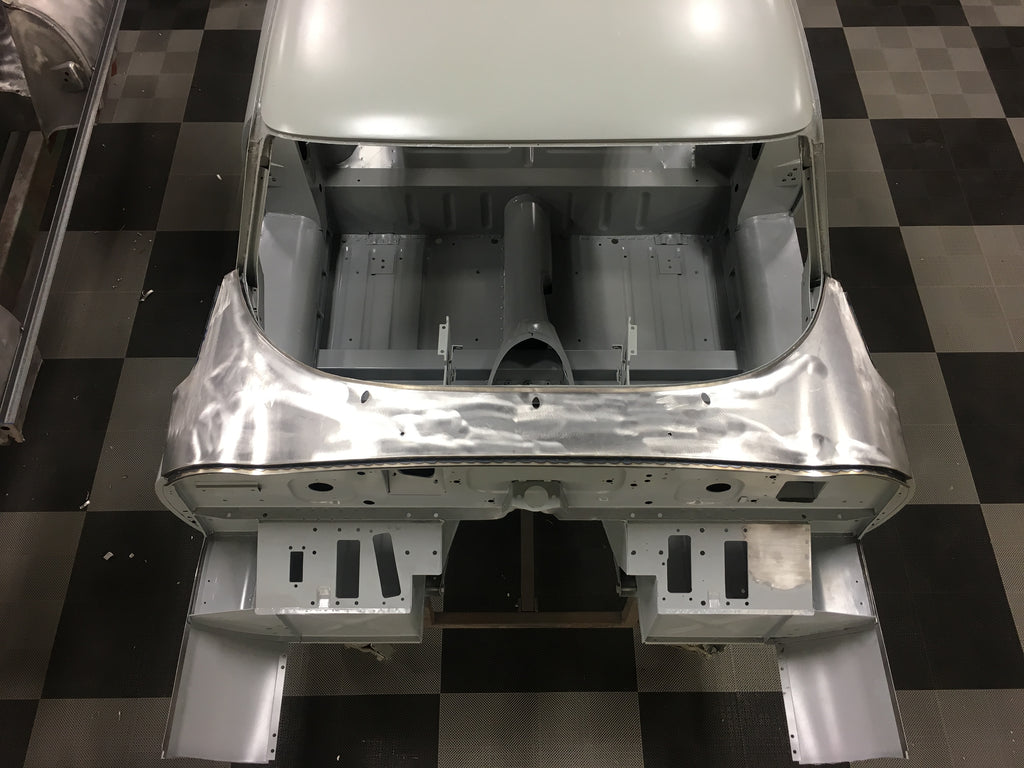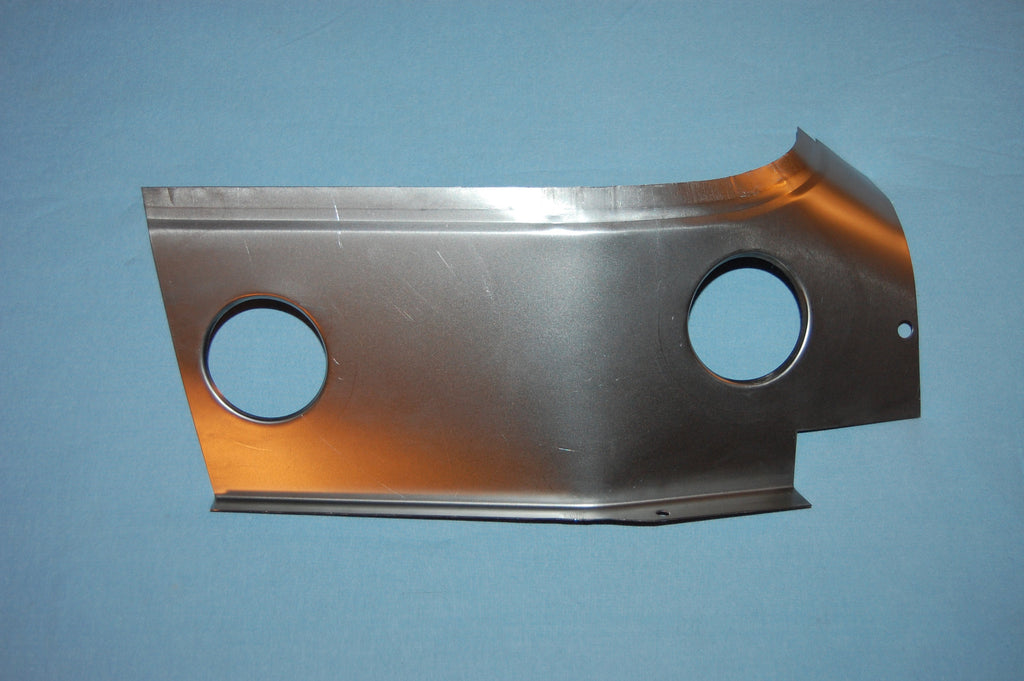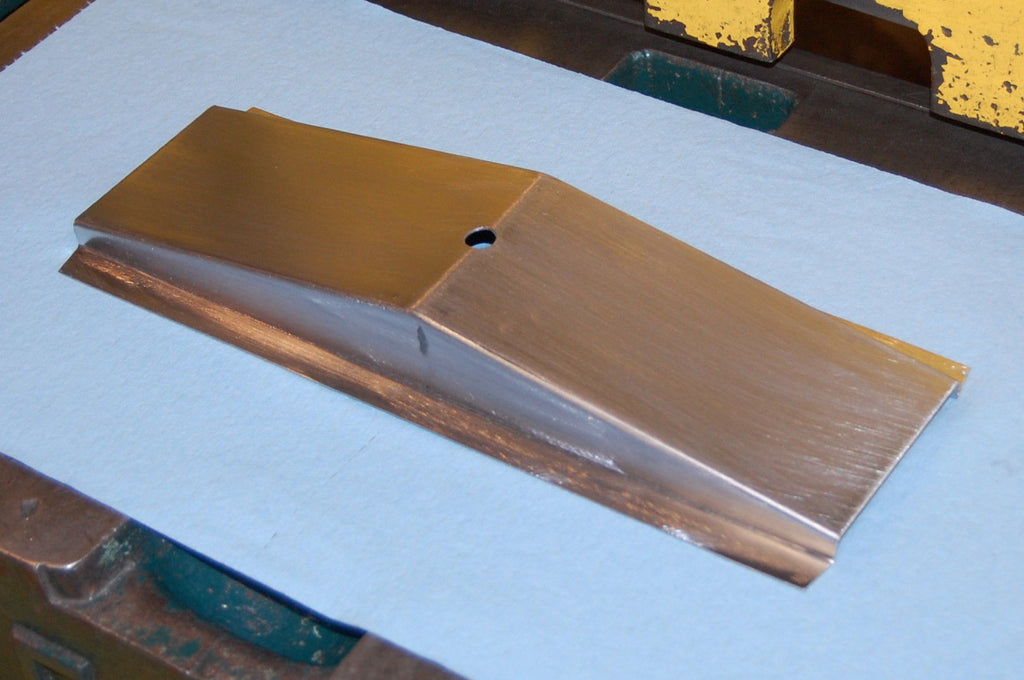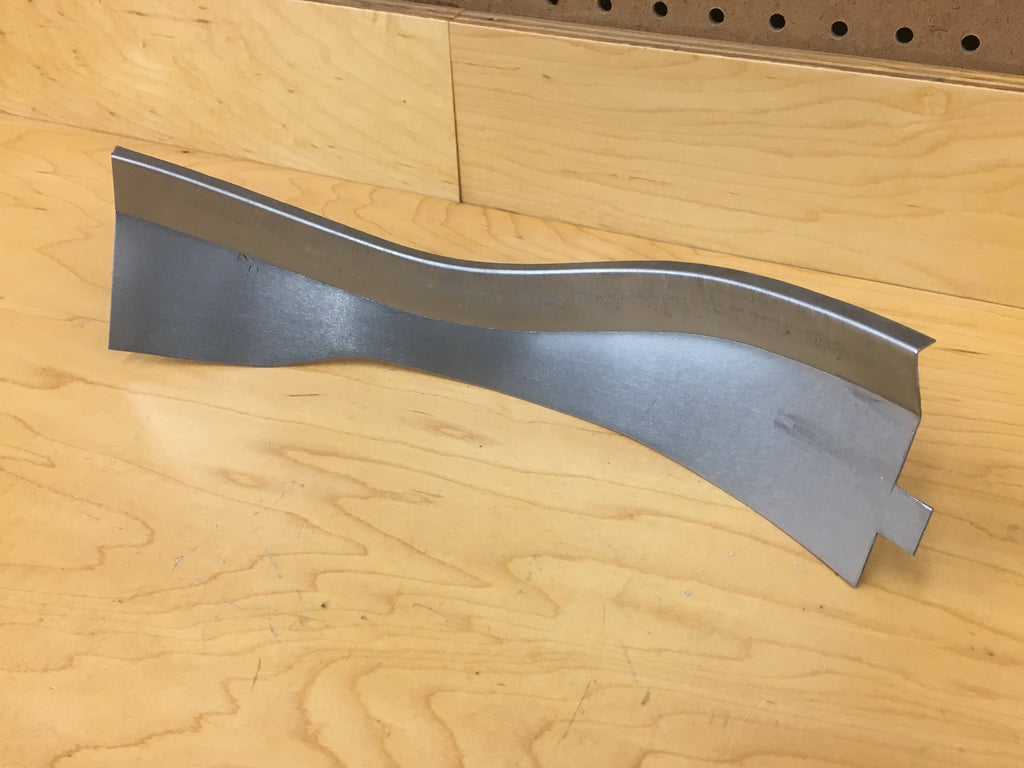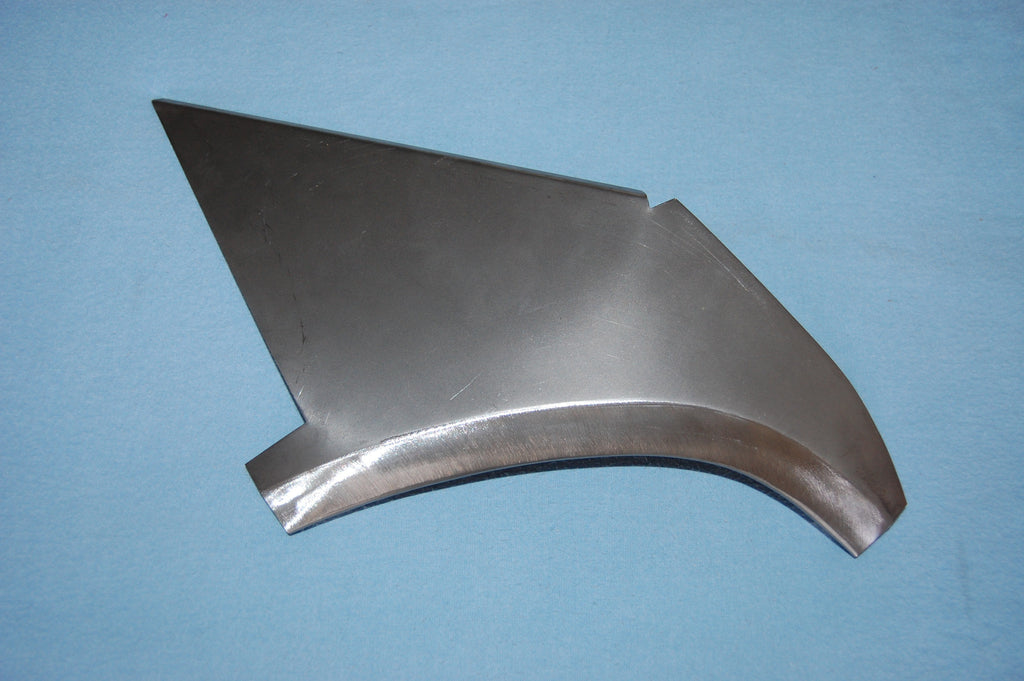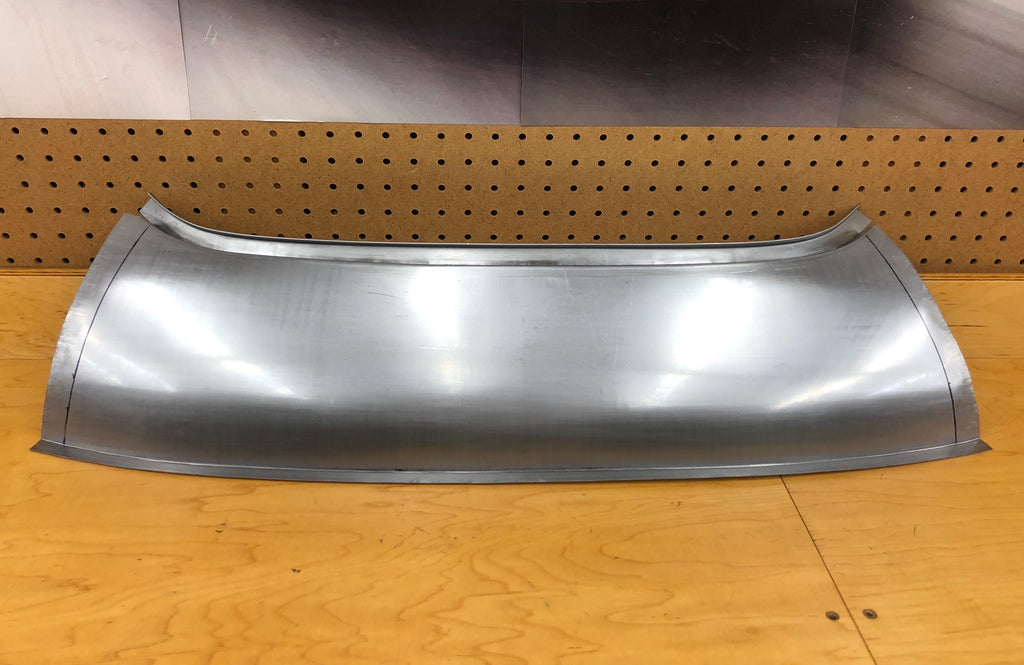This project is a conversion of an original Series 1 bonnet to 1961 “welded-louver” specs for a VERY early LHD Coupe that lost it’s original bonnet somewhere along the way. For those of you who may be unfamiliar with the early cars, early bonnets did not have their louvers pressed in, but these were instead separate panels that were spot-welded in from the underside. These louvers were also slightly different in their size and profile.
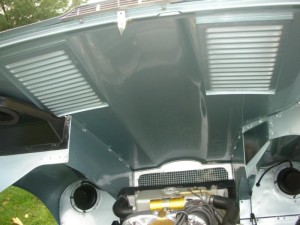
The view from the underside - the louver panels with turned edges on them for stiffness. Look closely - this is why all 3.8 heater ducts have that funny recess in the top edge... You can also see the flanges directly spot-welded to the outer skin in this photo - it's much cleaner than the bonded flanges, but also has its downsides...
In addition, there was not any bonding of the internal flanges – they were all spot-welded to the center section and wings. I’m sure there are those out there who KNOW the answer, but my assumption has always been that the change was made to speed up Production – both by eliminating the spot-welding process, AND the substantial additional finish time on the bonnet to fill the spot-welds so that they do not show through the paint. On original early cars, you could usually see one or two of these spot welds showing through anyway – or more… One other note that has been mentioned to me is that as the cars were driven over bumpy roads, these spot-welds pushed and pulled and gradually made their presence known – I’m sure you’ve seen this on the wheelwells, etc. of modern cars as they age…
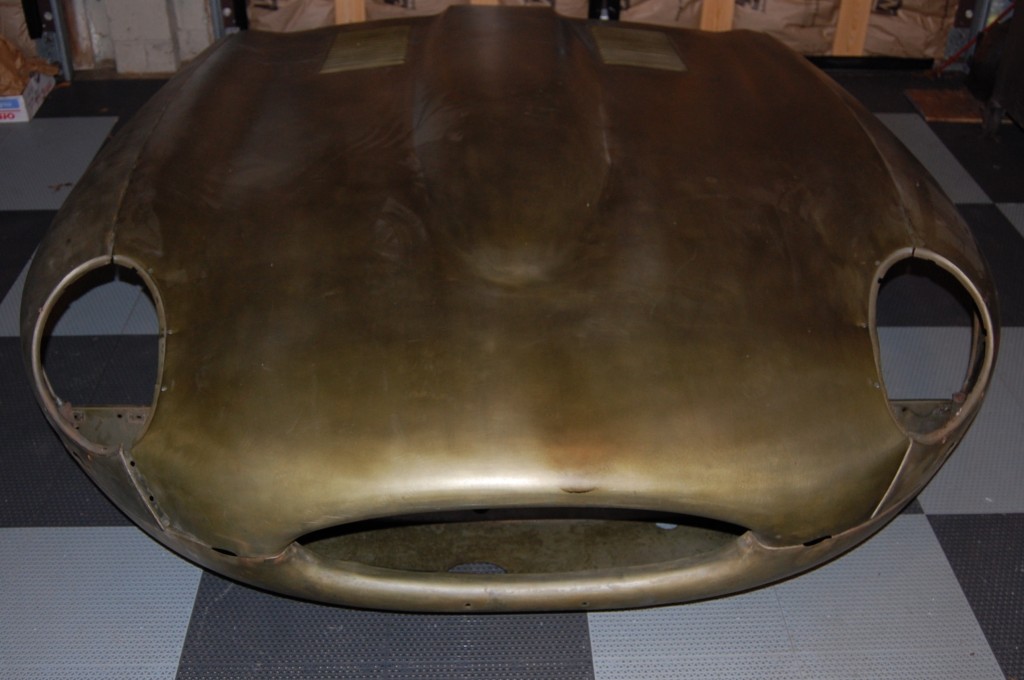
This is hands down the nicest original bonnet I have seen in the 25 years I have been involved with E-Types. There are couple marble-sized dings here and there, and a buckle at the tip of the power bulge, but not so much as one spec of rust, and the leading edges of the nose are flawless! The gold coating is some unknown rust preventative that we will be removing.
At any rate, this customer’s car is going to be a 100-point restoration of an extremely early car, and it simply must have a welded-louver bonnet. Incidentally, welded-louvers and outside locks do NOT go hand in hand… Outside locks were dropped after only 20 coupes and I think about 150 roadsters, but the welded bonnets carried on well past 1000 roadsters, for example… After an exhaustive search for an original, he has decided to take the plunge and convert this excellent original pressed and bonded bonnet.
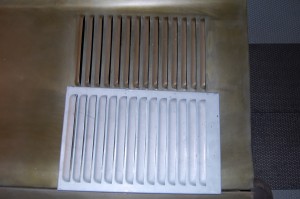
Here is a comparison of the two louver styles. These new louvers were custom formed by a previous owner of this project with the same conversion in mind. They are supposed to be exact - we;ll know soon when I have a chance to compare them to my friend's '61. They do LOOK correct based on photos, and I will say that the craftsmanship is excellent.
With the current supply of decent restorable bonnets nearly exhausted, and new bonnets now unavailable, this project is not for the faint of heart! There is no room for error in the cutting away of the original louvers, and each spot-weld needs to be almost perfect. This is the scariest part of all – even with a high-quality timed welder, and perfect panel fit-up, the misbehaved spot-weld is always just one pull of the trigger away!
I will be using the bonnet on a close friend’s ’61 OTS that I restored in the Summer of 1992 as my guide. The louvers have already been made by an earlier owner of the car, and I will be hand-forming the spot-welded flanges. I have seen other shops perform this conversion by simply spot-welding the existing bonded flanges to the external skin, but my experience with the earlier cars is that these flanges were wider on the welded bonnets, so I will form new ones that are EXACT. When this bonnet is completed, it will be indistinguishable from an original, to even the most discerning eye.
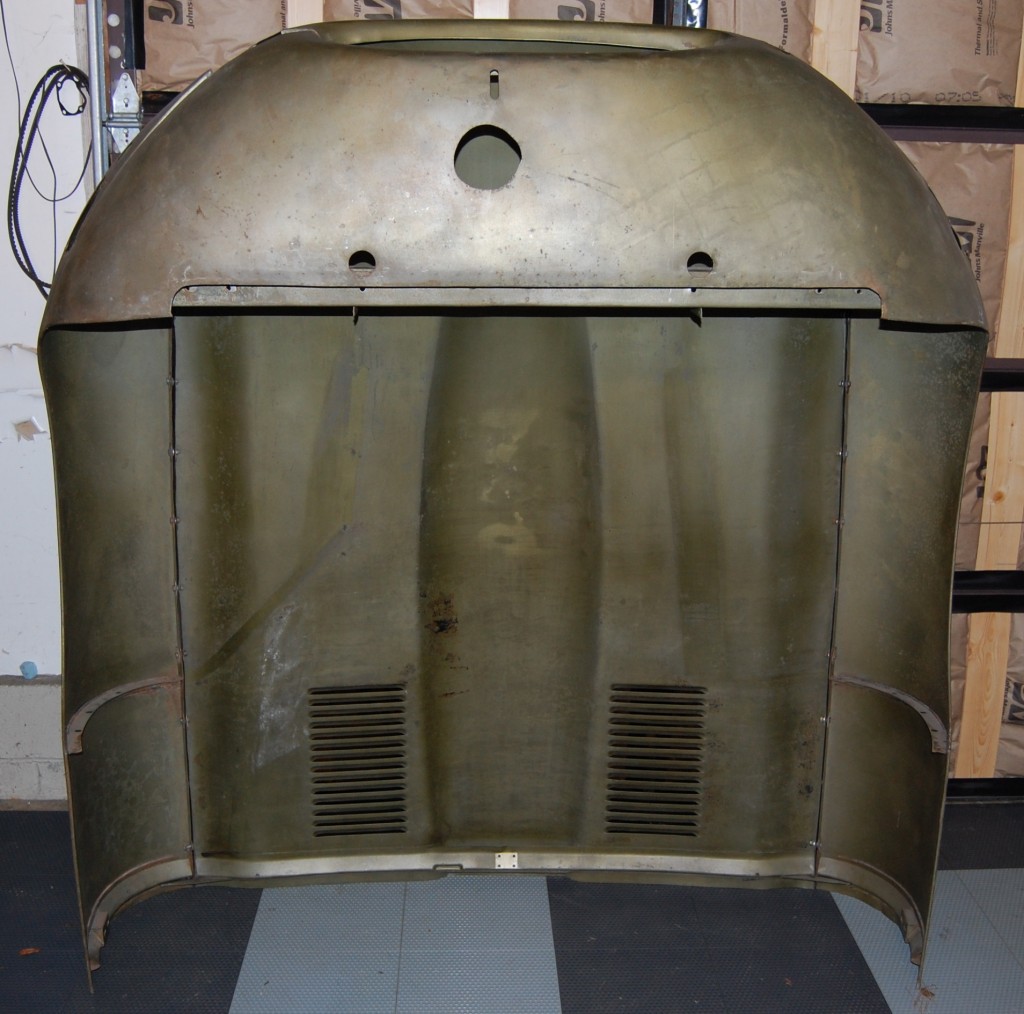
There's always SOME flaw though - nothing escapes the 'bodger' - I love that word - I got it out of a British magazine series on restoring E-Types from about 20 years ago. I think it's British for "idiot, hack, butcher, etc." WHO KNOWS what this was for... My only guess was a lazy way to reach in there and solve a wiring issue? We will form up a patch and TIG it in - and erase this butchery...

